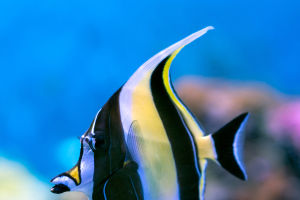Lissachatina Fulica is a medium to large terrestrial snail. Adult Lissachatina Fulica is generally 7-8 cm, the largest can grow to more than 20 cm. They are mostly active in wet environments and always be seen in rain and at night.
Lissachatina Fulica usually hides in a cool place, and makes a layer of albuginea on the shell mouth, leaving only a small hole for breathing. Under normal circumstances, they will shrink the snail meat into the shell to prevent dehydration, and come out when needed.
You'll encounter it in vegetable fields, farmland, orchards, parks, rubber plantations, and in overgrown, shady, damp environments. Their favorite foods include crops, forest trees, fruit trees, vegetables, flowers and other plants.
Notably, Lissachatina Fulica is not edible. Parasites and bacteria will cling to them. Once the snails were bitten by the mice, many lungworms up to 6 centimeters long grew in their brains. When people accidentally ingest meningitis, it can cause headaches and numbness.
But if you want to keep a Lissachatina Fulica at home, that's fine. Because it looks more interesting and is easy to feed.Growing Lissachatina Fulica at home requires a tightly covered aquarium. Although snails need ventilation, it is also important to make sure the lid of the container is tightly closed, as snails can easily crawl out and are not very safe for small children.
Lissachatina Fulica loves dirt, but don't use yard dirt as it may contain chemicals that could harm Lissachatina Fulica. It's best to use peat-free compost for a comfortable floor, and remember to keep the compost moist.
Lissachatina Fulica is happiest at about twenty-one degrees Celsius. If the room is not warm enough, the best way to achieve a higher temperature is to place a heating pad under half of the Lissachatina Fulica tank. This way the other half of the cool place can also be used for the snails to rest.
Full sun is too harsh for Lissachatina Fulica, and they stay hidden as much as possible. Therefore, do not place the aquarium in direct sunlight.
If your snail doesn't like the condition of its house, it's likely to enclose itself in its shell. At this time, you can check the temperature or cleanliness of the water tank, adjust the water temperature in time, and clean the water tank.
If Lissachatina Fulica's floors get dirty, remember to throw away the old compost and give it new clean compost. Please ensure that the water tank is thoroughly cleaned at least once a month, so as to keep the snail living environment clean and tidy. Remove everything while cleaning and scrub the tank thoroughly with hot water.
Lissachatina Fulica also needs regular baths, although only about once a month. Keep in mind that Lissachatina Fulica absorbs chemicals through the skin, so it's best not to wash with soap. Just dip them in warm water, then take them out and wipe them gently with a soft cloth.


